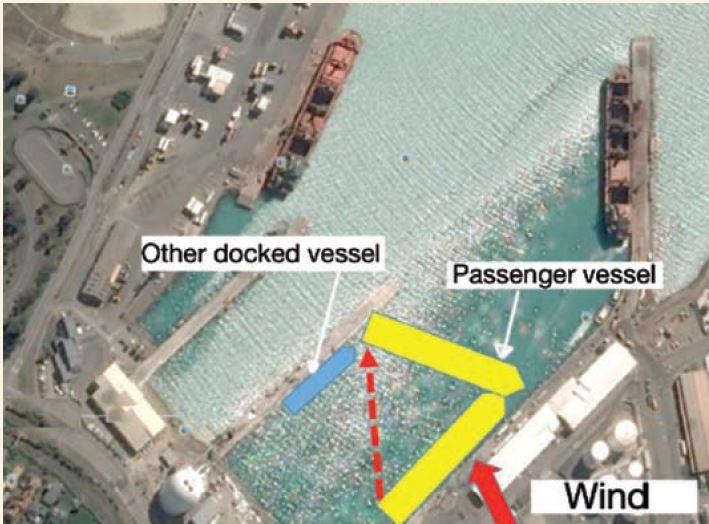201955 Bollards fail and ship’s stern breaks fre
Edited from TAIC New Zealand official report MO-2017-204
A passenger vessel was docked in good weather and light winds. Six headlines, six stern lines and four spring lines were made fast as shown in the diagram below: a total of 16 lines on 15 bollards.

About seven hours later the wind changed direction and increased considerably to about 25 knots, pushing the vessel away from the wharf. Almost immediately after this first increase in wind, a squall blew up with winds reaching 45 knots. The Master ordered engines and bowthrusters to help hold the vessel but seconds later one of the shore bollards holding a forward spring failed. Then an aft bollard and another spring bollard failed in quick succession. Before the vessel’s engines and thrusters could be used, three stern lines failed due to over stress and the vessel’s stern came away from the quayside.
As the stern swung out it contacted another ship and berth, as shown in the image below. Some time later, when the winds had subsided somewhat, the passenger vessel was re-secured alongside the berth with tug assistance.

The investigation found that the port company had virtually no knowledge of the actual safe working loads (SWL) of the various mooring bollards on the wharf. It was also discovered that the method with which the bollards had been fastened to the wharf and/or the strength of the underlying wharf structure meant they were unable to withstand the forces imparted on them by the vessel’s mooring lines.
Lessons learned
- Knowing the safe working loads of the various mooring bollards in a port is critical to safe ship operations. While this is primarily a port function, take a walk on the dock and have a look at the bollards – do they look good? Is the SWL of each bollard indicated?
- If a line or bollard fails under stress, a cascading effect can occur as each of the remaining lines or bollards become overloaded. In the event of one failure, take immediate and positive action to control the ship’s potential movement.
